When we discuss how to achieve higher rankings on search engine results pages through SEO, we may not realize that a disruptive transformation is quietly taking place. In the past, when we searched for a question, we would type it into the browser and enter the results page, then select the appropriate page based on the link titles.
With the arrival of the AI generation, this traditional search experience is being completely disrupted. In the future, most users are likely to search for answers through AI tools like ChatGPT, rather than relying solely on links in search results.
Let’s now take a deeper look at this technology
What is GEO?

GEO is an advanced marketing technology based on SEO principles. It optimizes website content structure, allowing AI to directly extract and reference articles to answer user queries.
When users want to dive deeper, they can click through to the website, potentially converting into consultation opportunities.
Why Trust is an Advantage of AI
As mentioned earlier, users in the past would spend a lot of time gathering reliable content when searching for answers. Although Google has significantly improved this situation through search intent, the problem still exists.
The advent of AI solves this issue by pulling existing content and integrating it for training, directly presenting answers to users.
One significant advantage is that the answers provided by AI are usually satisfactory, leading users to subconsciously trust that AI-generated content is reliable.
Why Declining Traffic is a Disadvantage of AI
This has a significant impact on website conversions.
When organic traffic declines, site operators are forced to focus more on high-converting content. While this shift may not be fatal, the weakening trend compared to the past is inevitable. As a result, many businesses and individuals have started diversifying their traffic sources.
For example, the founder of Backlinko no longer relies solely on the website but also actively runs a YouTube channel to expand his reach.

But for content-driven websites that rely heavily on search engines, this is undoubtedly a heavy blow.
Sites like WikiHow are now being forced to think about how to break users’ dependence on AI and bring them back to their own platforms.
Differences Between GEO and SEO
After explaining what GEO is and its advantages and disadvantages, we will further explore GEO by comparing it with SEO.
| Aspect | Traditional SEO | GEO |
|---|---|---|
| Ranking Goal | First in blue links | Become part of AI-generated content answers |
| Content Structure | Long content, keyword layout | Clear structure, summary + FAQ + data support |
| Optimization Focus | Number of links, anchor text, click-through rate | E-E-A-T, credibility, ability to provide direct answers |
| Content Language | Mixed for both users and search engines | Optimized for AI understanding and extraction |
| Tools | Ahrefs / GSC | ChatGPT / Perplexity / JSON-LD |
EEAT
That’s right. Even AI needs to be trained on data that meets the EEAT (Expertise, Authoritativeness, and Trustworthiness) standards. If it can’t handle credibility issues—like unclear sources, outdated info, or lack of expert support—its answers will be questioned.
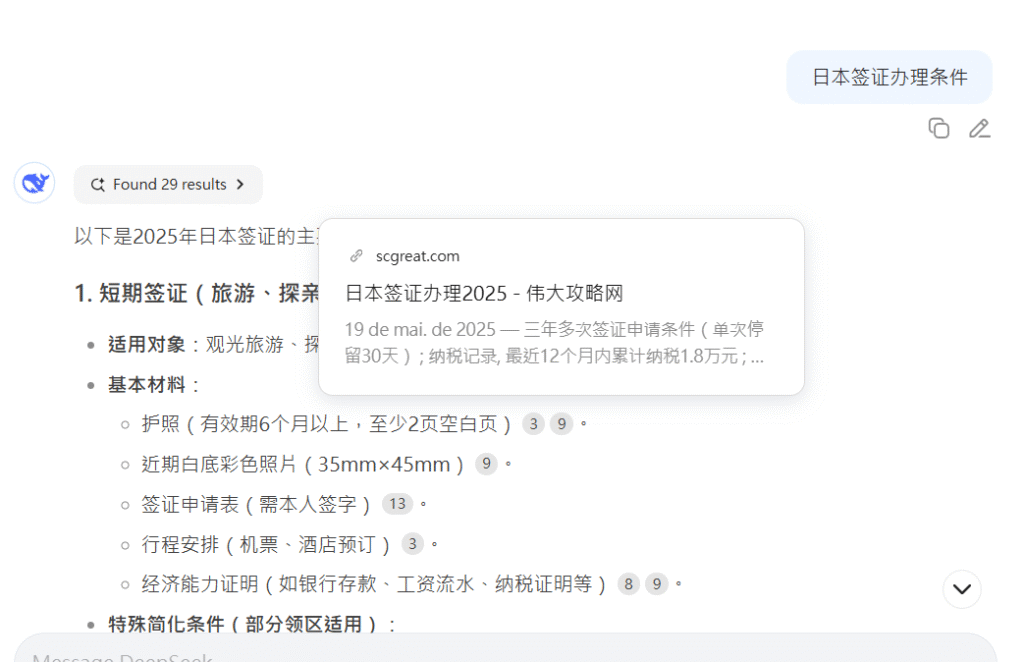
Three months ago, an article on my website about Japan visa application successfully passed EEAT certification and was featured by Deepseek. I believe that Deepseek’s evaluation criteria not only rely on the content itself but also likely take into account the ranking on the Bing search results page.

There are many opinions about AI optimization methods.
Some tech experts in China believe that GEO optimization means companies posting marketing content on authoritative sites to train AI and boost rankings.
However, this approach does not align with EEAT standards and is, in fact, a form of content source pollution. By relying on marketing soft articles to train AI, it essentially teaches AI low-quality information, which weakens its accuracy and credibility.
For example, DEEPSEEK, although well-known, has a significant quality gap compared to ChatGPT, with many of its responses being incorrect.
Optimization Focus
In addition to the performance of content on search engine result pages, we need to focus more on optimizing the content itself.
In the past, search engines judged the quality of an article based on the author’s credibility, the website’s historical trustworthiness, and user data. However, today, AI leverages knowledge graphs to gain a deeper understanding of the content, enabling more accurate evaluations.

Our content strategy should not only focus on the users themselves but also take AI into account. Therefore, creating a frequently asked questions (FAQ) page is an important step in GEO optimization.
How to Write GEO-Friendly Content?
The advancement of semantic technology enables artificial intelligence to quickly extract key information from complex language structures and organize it fluently to provide corresponding answers.

This is achieved after training. However, before training, artificial intelligence cannot fully understand the meaning of complex language; it only relies on existing rules and patterns to capture and process information. Therefore, the focus of GEO should be to summarize the content and hand it over to AI for processing.
Conclusion First, Details Later
In Eastern culture, people tend to use a more gentle approach when communicating. They usually start with some preparatory remarks, observing the other person’s response before gradually leading to the conclusion.
However, AI does not fully understand this subtle and ambiguous language. As a result, AI prefers to present conclusions directly at the beginning of a paragraph.
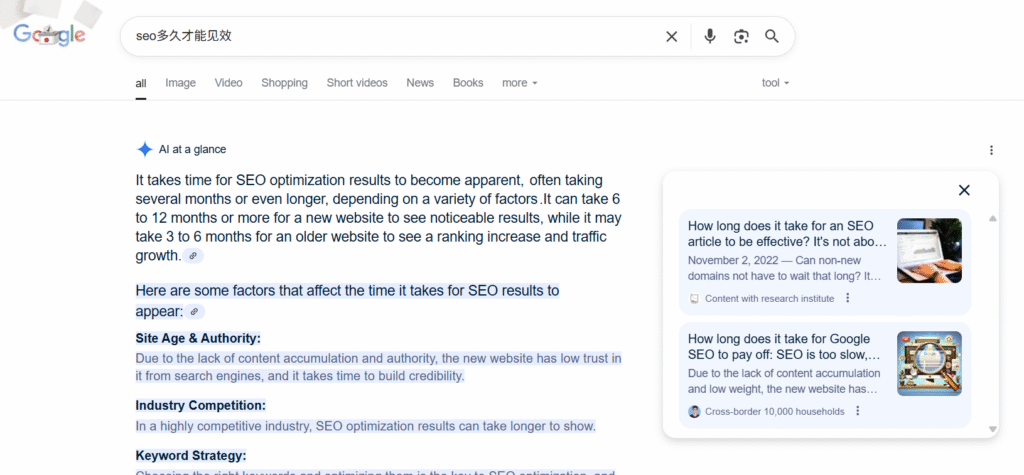
When you search for the question “How long does it take for SEO to show results,” we can observe that the right-hand side citation links usually provide relevant answers or further information. I approached this website with the question in mind.
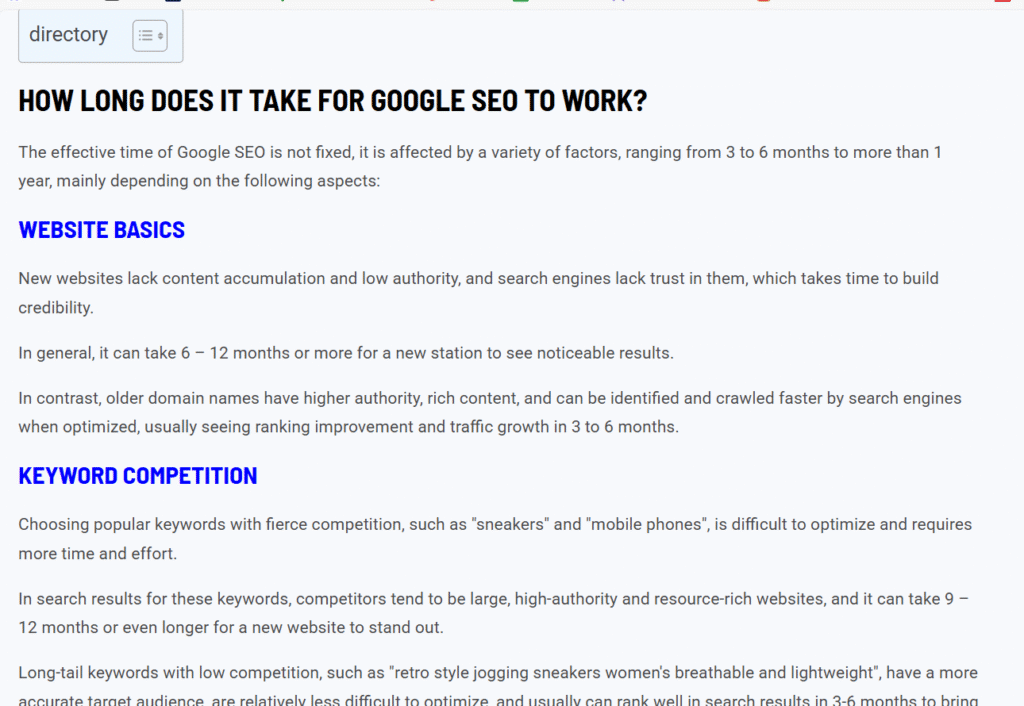
We can clearly see that when a question is used as a secondary heading, the website’s author typically provides a direct answer to the question first, and then elaborates on the reasoning behind it. When explaining the reasoning, the author also follows a structure of presenting the conclusion first, followed by the details. This approach not only quickly meets the users’ needs but also enhances the clarity and readability of the content.
Set up an independent FAQ section on the page
When creating content, it’s important to balance both AI requirements and user experience, though these two aspects can sometimes conflict. What AI considers high-quality content might not always align with what users expect. For example, if users find the writing style too mechanical, they may lose interest and quickly leave the page.
The best approach is to separate these two aspects: dedicate the main content of the page to enhancing user experience, while placing AI-related content in less noticeable areas like sidebars. This way, you can ensure the content is user-friendly while still meeting AI optimization needs.

In Figure 1.1, the operators of the letsgojp website optimized the page structure for GEO and ultimately received a Google Featured Snippet recommendation.

Similarly, in the AI-generated content section, a travel website called “Bobby Sees the World” also received a Featured Snippet.
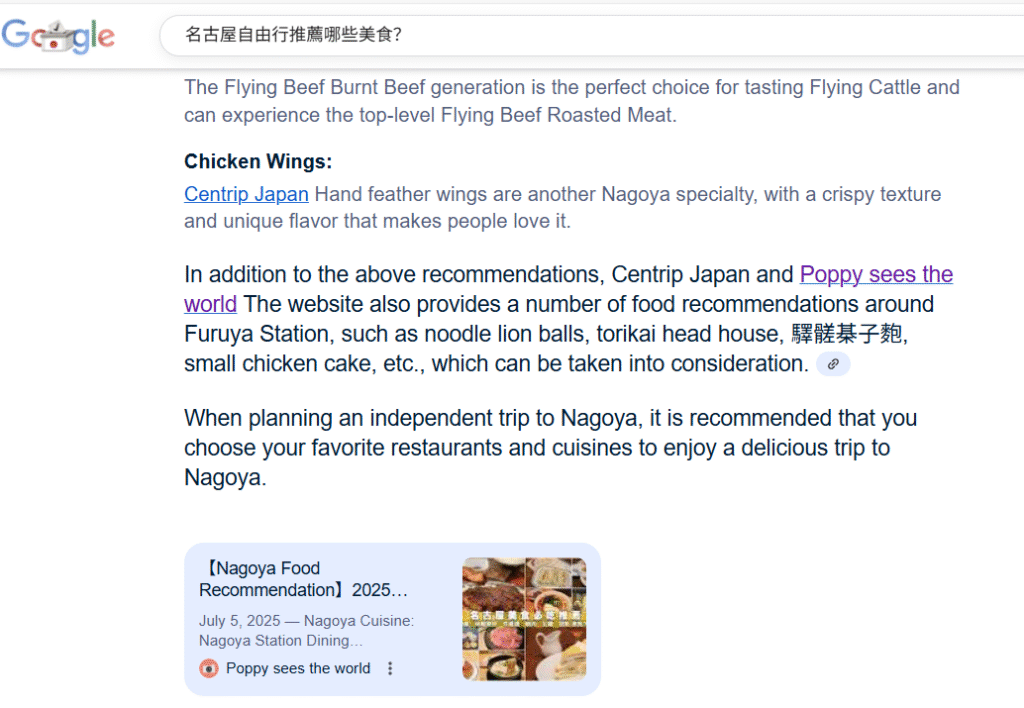
When I visited that article, it was exactly as I had anticipated. The overall content creation style follows a “conclusion first, details later” format.

The only potential issue with these types of pages is that, while they may receive a Google Featured Snippet, user click intent significantly decreases. This is because these pages tend to cater more to AI preferences, without creating enough in-depth value for the users.
For example, the content may include basic information like store details, location, and staff, which are not the kind of information users are subconsciously seeking beyond their basic needs.
For content websites, it is the content beyond AI generation that truly attracts users. WikiHow has always emphasized its content creation process, with the goal of reassuring users that their content is more reliable than AI-generated ones.
Enhancing a Website’s EEAT Attributes
To achieve AI citations through GEO optimization, in addition to the content and page optimization mentioned above, the website must also establish authority.
Websites with authoritative attributes not only have a higher chance of ranking easily on search result pages, but they are also more likely to be cited by AI.
For example, the keyword “入境法国须知” (which roughly translates to “France Entry Requirements”) ranked #1 on the homepage within a day of publication.
This rapid ranking is closely tied to the website’s authority.

It’s also important to note that both Bing and Google’s algorithms primarily source their data from the information found within internal search result pages.
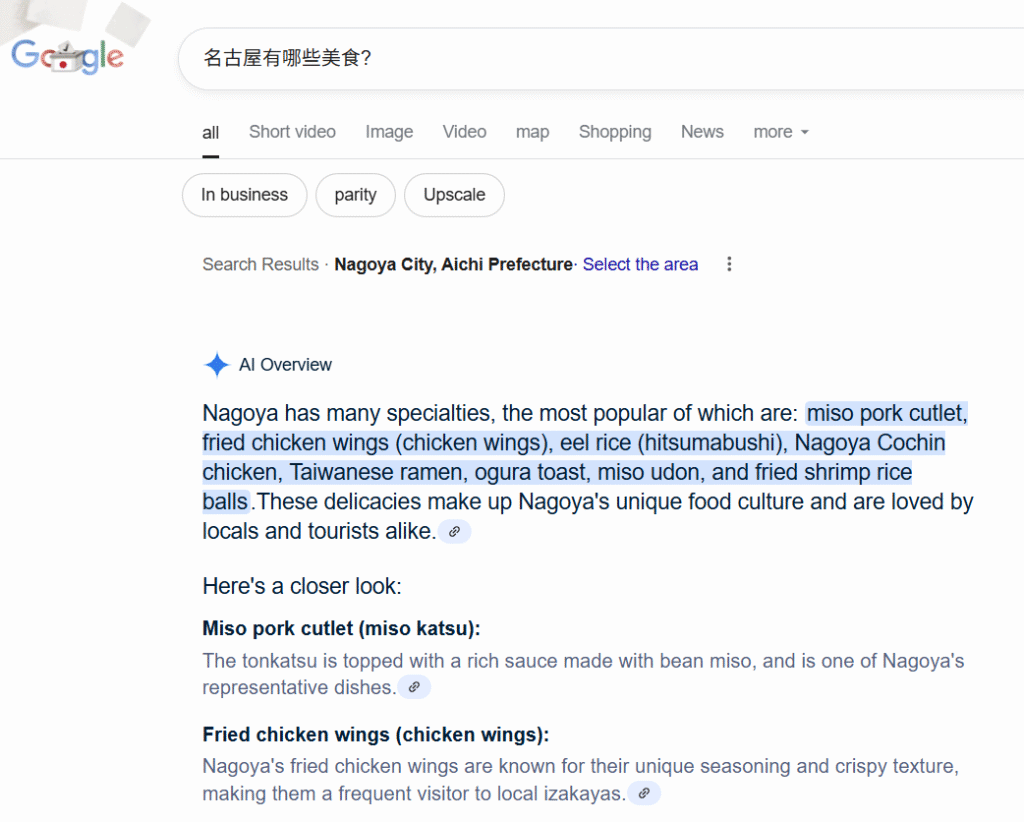
A website ranking on the search results page doesn’t necessarily mean it will be cited by AI, but if the page has been optimized through GEO after achieving a ranking, the likelihood of being cited by AI increases significantly.
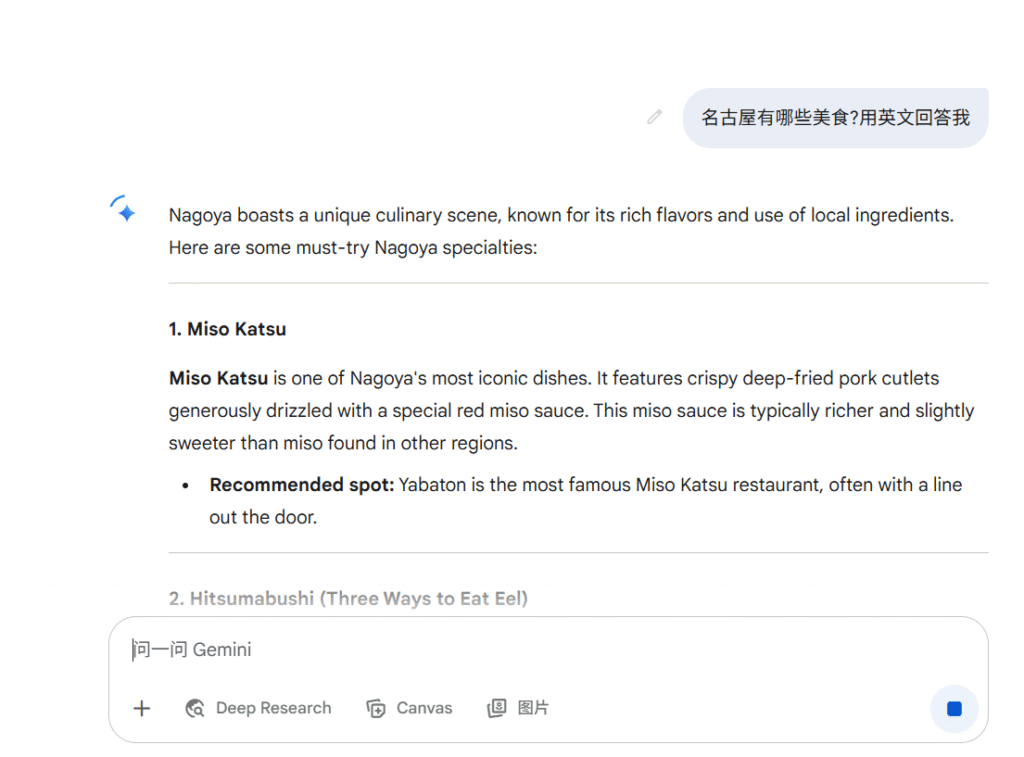
Based on the two images above, we can see that the citation of AI content is closely related to websites with high EEAT in search result pages.
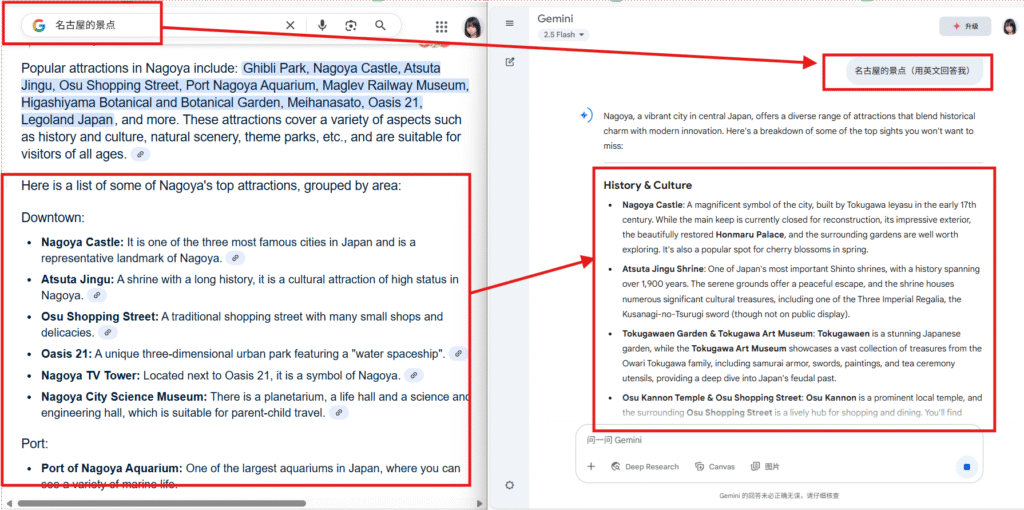
If AI can understand a website’s content, it is more likely to be cited as a source.
If you want to perform GEO optimization and get cited by AI, improving the EEAT attributes of your website is a necessary step.
Building Authoritative Backlinks
Google representatives have publicly confirmed that the company’s algorithm relies on interlinking between webpages to assess a website’s authority. As John Mueller from Google said, “These linking relationships largely demonstrate a website’s reputation.”
He also mentioned: “We do use links in our algorithms, but we also use many other factors. So focusing only on links might cause more issues for your site rather than help it.”

while also acknowledging that not all linking practices are valid or meaningful. Similarly, Gemi and ChatGPT analyze the relationships between data elements to assess the reliability of referenced content. This approach not only considers the source itself but also emphasizes contextual cross-verification and the logical consistency of citation chains.
For example, if a website publishes an article titled “The Relationship Between SEO and GEO,” embedding a link to an authoritative explanation of the GEO concept at the mention of “GEO” is more likely to be favored by AI as a valid and trustworthy reference.
Conversely, if the link associated with “GEO” directs to unrelated content—such as a promotional page or irrelevant material—the system may deem the link unreliable, which could negatively impact the overall quality evaluation of the article.
Furthermore, if you want your article to be cited by AI, using external link-building strategies to encourage others to reference your content can significantly increase the likelihood of your article being adopted and recommended by AI systems.
At the same time, you should try to have others mention your brand or product within their article content whenever possible.
What I Think
GEO can be seen as an enhancement and extension of traditional SEO. In essence, GEO builds upon the foundation of SEO to deliver more advanced functionality. However, it is important to note that high-quality SEO content alone may not necessarily be cited or utilized by AI systems. To increase the likelihood of content being crawled and adopted by AI, GEO techniques must be applied to optimize it accordingly.
Stay tuned to my blog as we continue to explore the potential and applications of GEO technology.
